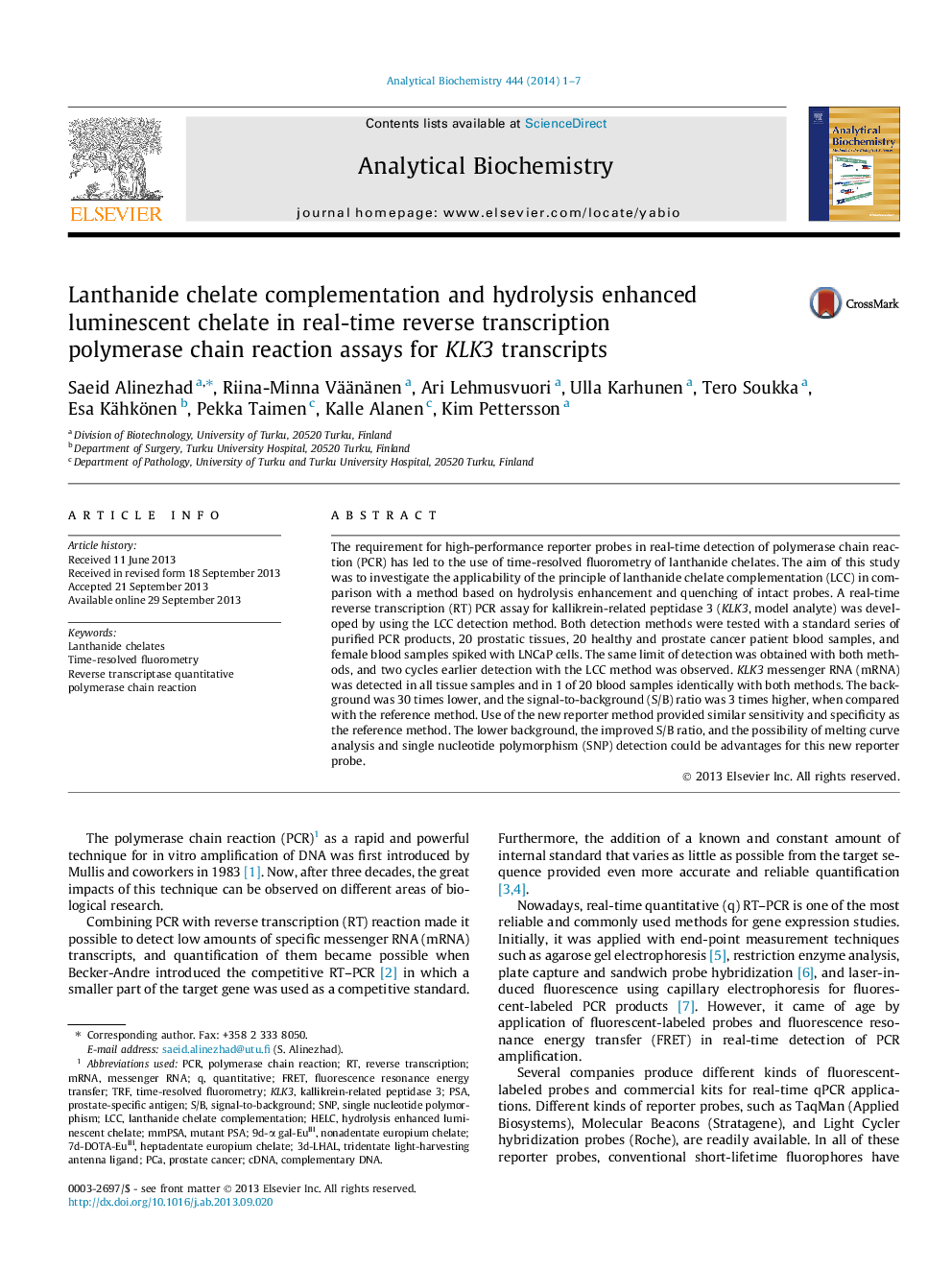| Article ID | Journal | Published Year | Pages | File Type |
|---|---|---|---|---|
| 7559454 | Analytical Biochemistry | 2014 | 7 Pages |
Abstract
The requirement for high-performance reporter probes in real-time detection of polymerase chain reaction (PCR) has led to the use of time-resolved fluorometry of lanthanide chelates. The aim of this study was to investigate the applicability of the principle of lanthanide chelate complementation (LCC) in comparison with a method based on hydrolysis enhancement and quenching of intact probes. A real-time reverse transcription (RT) PCR assay for kallikrein-related peptidase 3 (KLK3, model analyte) was developed by using the LCC detection method. Both detection methods were tested with a standard series of purified PCR products, 20 prostatic tissues, 20 healthy and prostate cancer patient blood samples, and female blood samples spiked with LNCaP cells. The same limit of detection was obtained with both methods, and two cycles earlier detection with the LCC method was observed. KLK3 messenger RNA (mRNA) was detected in all tissue samples and in 1 of 20 blood samples identically with both methods. The background was 30 times lower, and the signal-to-background (S/B) ratio was 3 times higher, when compared with the reference method. Use of the new reporter method provided similar sensitivity and specificity as the reference method. The lower background, the improved S/B ratio, and the possibility of melting curve analysis and single nucleotide polymorphism (SNP) detection could be advantages for this new reporter probe.
Keywords
Related Topics
Physical Sciences and Engineering
Chemistry
Analytical Chemistry
Authors
Saeid Alinezhad, Riina-Minna Väänänen, Ari Lehmusvuori, Ulla Karhunen, Tero Soukka, Esa Kähkönen, Pekka Taimen, Kalle Alanen, Kim Pettersson,
